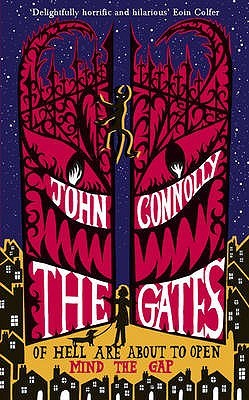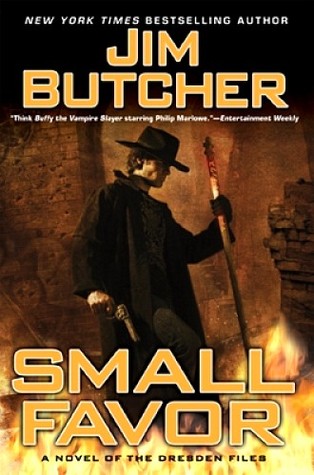I received this book for free from in exchange for an honest review. This does not affect my opinion of the book or the content of my review.

Swing, Brother, Swing
by
Ngaio Marsh
detective mystery, police procedural, vintage mystery in a Kindle edition that was published by Felony & Mayhem Press on December 15, 2012 and has 280 pages.
Explore it on Goodreads or Amazon
Other books by this author which I have reviewed include Dead Water, Killer Dolphin, A Man Lay Dead, Enter a Murderer, The Nursing Home Murder, Death in Ecstasy, Vintage Murder, Artists in Crime, Death in a White Tie, Overture to Death, Death at the Bar, Surfeit of Lampreys, Death and the Dancing Footman, Died in the Wool, Night at the Vulcan, Colour Scheme, Spinsters in Jeopardy, Scales of Justice, The Death of a Fool, Singing in the Shroud, False Scent, Clutch of Constables, Hand in Glove, When in Rome, Tied Up In Tinsel
Fifteenth in the Inspector Roderick Alleyn vintage mystery series about a Scotland Yard detective. Set in London in the late 1940s, the focus is on an eccentric peer and his new passion as a tympanist. It was originally published in 1949.
My Take
Okayyy . . . Swing, Brother, Swing takes off with a metaphorical bang with Marsh using third person global subjective point-of-view, so we learn the thoughts, emotions, and actions of a number of characters.
Lord Pastern and Bagott is an idiosyncratic nutcase, who embraces passions one after another, from yoga, nudism, free love, a religion that embraced total immersion baptism, giving up his title, Theosophy, and more. His marriage has been a pattern of break-ups one after the other. Each followed by a reconciliation.
Sounds like George’s dance steps are just like him, changeable on a whim with odd variations and eccentricities. The darling of the penny press, George keeps them in scandalous news that affronts his family and his peers. George does keep life interesting. Now that Alleyn is interviewing, George keeps to the truth, but slanted in such a way as to make himself look guilty. He helps this along by keeping back some of that truth simply because he wants to look guilty. He really was a jerk, even if he did make the story more interesting.
George is so inconsiderate of others and doesn’t seem to understand how his actions affect others. Although . . . the end seems to turn this all on its head. But that bit where he insists that Syd be fired!? What a jerk. Of course, part of it is Breezy’s fault. That one is so greedy! Then you get towards the end and everything turns on its head with several characters! Ya gotta love George!
Hmm, sounds like Félicité’s upbringing has made her the drama-seeking person she is today. She’s terrified of her current situation and yet she embraces it. I can easily see why no one in the family likes Rivera. He is an excess of emotion and what’s good for the gander is not acceptable for the goose. He’s so obnoxious and then he complains that his reception is unsympathetic.
One of the interesting aspects of reading vintage stories is what people did back then for entertainment. No radio. No TV. No recorded music. No video games, lol. Instead they went out to nightclubs, dancing, enjoying live music, performing skits and singing in their own homes.
Breezy’s idea of the band members performing crazy music and doing stunts to keep the audience enthralled sounds like fun. I do like the magazine, Harmony, not fearing to expose wrongdoings and saying what it thinks. The storytelling game, novelettes, between Carlisle and Edward was fun, a good cognitive exercise, lol. Cecile makes a pithy comment about how war changes a man’s views.
Then when it comes to the actual investigation, people are keeping secrets. It’s the human condition to keep secrets, no matter what.
Fox has his specialty that Alleyn uses ruthlessly, and it’s such fun. It’s true what they say — the servants know everything. It appears that Manx has his own plans as well, and they’re quite practical for a man with his Leftist leanings.
It’s a combination of action and character with that look into the morals, mores, and cultural of that time period.
Good fun and a great read.
The Story
Between Félicité and George, the Pastern and Bagotts are upsetting life for everyone! Especially George, since he’s the one who introduced Fée to Carlos, the piano accordionist who performs with Breezy Bellair and his Boys.
Then a bit of strange business goes awry and actually kills him, so it’s lucky that Inspector Roderick Alleyn is in the audience. Now Alleyn must follow a confusing score that features a chorus of family and friends desperate to hide the truth and perhaps shelter a murderer in their midst.
The Characters
Chief Detective-Inspector Roderick Alleyn is an aristocrat who chose to become a policeman. He’s married to Agatha Troy, who is a famous painter. And she’s pregnant! Sir George Alleyn had been Roddy’s father who had been a friend of Cecile’s family. Nigel Bathgate is a journalist friend of Alleyn’s; he’s employed by the Evening Chronicle.
Scotland Yard
Alleyn’s team includes Inspector Fox; Dr Curtis, who is the police surgeon; Detective Sergeant (DS) Thompson is the photographer; and, DS Bailey specializes in fingerprints. More coppers include DS Gibson, DS Stott/Scott, DS Watson, DS Sallis, Sergeant Whitelaw, DS Jimson, and DS Marks. Bob is tailing Manx. Captain Entwhistle is the ballistics expert. Mr Carrick is a government analyst. Sir Grandy Morton is a famous pathologist.
Duke’s Gate is . . .
. . . the Pastern and Bagott home in London where Cecile, Lady Pastern and Bagott née de Fouteaux, formerly de Suze, a stately, conservative woman who is on her second marriage, lives. Félicité de Suze is her daughter, George’s stepdaughter. A supreme egoist, George Settinjer, Marquis of Pastern and Bagott, leaps from passion to passion, especially if it’s outrageous for a peer of the realm. He currently embraces the tympani and writing music. Carlisle “Lisle” Wayne is Cecile’s niece. The Honorable Edward Manx, a dramatic critic who does some writing for Harmony, is Cecile’s second cousin.
Petronella Xantiappe “Hendy” Henderson had been Félicité’s governess and now serves as secretary-companion to her and Cecile. Spence is the butler. Miss Parker is the housekeeper. Other servants include Madamoiselle Hortense; Mary, who is a parlourmaid; Myrtle; Monsieur Dupont; and, William, who is a footman. Clochemere is Pastern and Bagott’s country estate. Desirée is Cecile’s sister.
Breezy Bellairs is the popular band leader — a big noise along with his boys. The passionate and jealous Carlos da Rivera plays a piano accordion and claims to be from an aristocratic family in Argentina. (One of his aunts is Donna Isabella da Manuelos-Rivera and an uncle is Señor Alonza da Manuelos-Rivera who had a post at the embassy in Paris.) Syd Skelton is the tympanist. Happy Hart is the pianist. There are also four saxophonists and a double-bass.
The Metronome is a popular club where Breezy’s band plays. Caesar Bonn is the manager, a shareholder, and the maître de café. David Hahn is the secretary. Dr Allington was in the audience.
The Harmony is . . .
. . . a monthly magazine that includes “The Helping Hand“, a popular advice column that operates via the Personal Chat, 5 bob for a Private Chat, and is written by GPF, a.k.a. G.P. Friend, a.k.a. Guide, Philosopher, Friend.
Others mentioned include Lady Dartmoor, Mr Jeremy Thringle, Miss Penelope Santon-Clarke, and Captain Anthony Barr-Barr. Other bands that concern Breezy include The Royal Flush Swingsters, Bones Flanagan and His Merry Mixers, and the Percy Personalities. The Jivesters is another band that plays at the Metronome. Other clubs include Carmarelli’s, Stein, and the Lotus Tree. Snowy Santos is a South American drug gang.
The Cover and Title
The primary color of the cover is a warm blue-gray with Marsh’s signature style using a gradated “box” on the top half with the darker blending to the lighter in the center to showcase the title in a very slight gradient of white to pale gray blue. Across the middle is the stretched banner in a pale gray with the author’s name in her signature art deco font of really dark blue-gray, its textured lines, and the glowing white shadow. Coming up from the bottom are one-sided scalloped lines in white raying out to the sides with their own gradients in between. The central graphic is a set of drums in green and copper. Spanning the scalloped rays is an arched banner in a pale blue-gray with the series info in a lighter blue-gray.
The title refers to George’s latest passion with the band when they Swing, Brother, Swing.




















